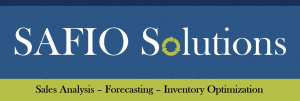The pandemic of 2020 has brought uncertainty and challenges to all businesses, causing supply chain disruptions to most. One thing the pandemic has taught us is that we truly are connected to the rest of the world. It is imperative to keep abreast of current events and foreign affairs and the ways they affect your business. Being aware of what is happening in the rest of the world can help you plan for a successful 2021:
The Pandemic Forced Shutdowns and Labor Shortages
The pandemic forced overseas production facilities to shut down. It also led to a shortage of labor, even when the factories reopened, as people were ill or did not feel comfortable returning to work.
- Consider diversifying your production. The pandemic has taught us that it is important to have options. When China shut down, the manufacturers that were able to source their products from countries other than China avoided delays in the early days of the pandemic. Shut downs and re-openings occurred at different times in different parts of the world. By diversifying, you may be able to shift production if one country shuts down while others remain open.
Material and Production Planning
Even prior to the pandemic, tensions with China have been escalating. Currently, officials in the US Department of Homeland Security are considering banning cotton and tomatoes from the Xinjiang region of China. For now, they are restricting imports from only certain factories that employ forced labor, thus creating a shortage of raw materials.
- It is imperative to use only certified and approved factories for production. Factories should be inspected and proven to use fair labor practices.
- A shortage of raw materials will cause price increases. Most likely, the increase in raw material costs will necessitate price increases to be passed on to the customer. This will most likely affect demand.
- Consider diversifying and extending lead times
Stay on Top of Supply Chain Delays and Disruptions
The entire supply chain has been disrupted by the global pandemic. Imports from overseas have been delayed due to factory closures and the inability to get raw materials. There have been severe port delays due to labor shortages. Transportation costs have sky-rocketed as demand for rail and trucks have reached unprecedented levels while industries try to transport the backlogs. It is becoming increasingly difficult for low-priced items to be profitable due to increases in freight costs. There is a shortage of railcars, trucks and employees. Trucks are backed up at the warehouses due to a labor shortage. Retailers are missing sales because the shelves are empty due to supply chain delays.
- Work closely with your Logistics Department, 3PL, Warehouses and Carriers. Keep close tabs on the location of your merchandise. If you are a supplier, communicate regularly with your customers and be upfront. They will appreciate that you are on top of the situation and keeping them in the loop.
- Port delays can be unpredictable – you may not know when your merchandise will be ready for pick up. Communicate any delays to your customers.
- Carriers may be booked, but fail to show up for their appointments. While this is frustrating, it is happening regularly and it is necessary to stay on top of the proper procedures for re-routing.
- Backups at the retailers’ warehouses are also causing delays. Communicate with the customers about the merchandise that is in their yards – they may be able to expedite receiving.
Organize Your Data
The pandemic has brought with it many challenges for manufacturers, wholesalers and retailers. It has made a difficult job even more difficult. Now more than ever, it is imperative that your data is clean and organized. By having organized data, you can have the best analysis and develop solutions concerning sales and inventory levels and future forecasts at the click of a button.
Gain Vision into your Business
The challenges of 2020 have put unprecedented pressure on businesses to come up with creative solutions to their supply chain disruptions. To come up with these solutions and plan ahead for potential disruption, companies must have a clear vision into their business. A robust forecasting and data analytics platform will provide the vision for strategic business decisions during these times. For help with gaining this vision, contact the industry experts at SAFIO Solutions, or visit our website.




